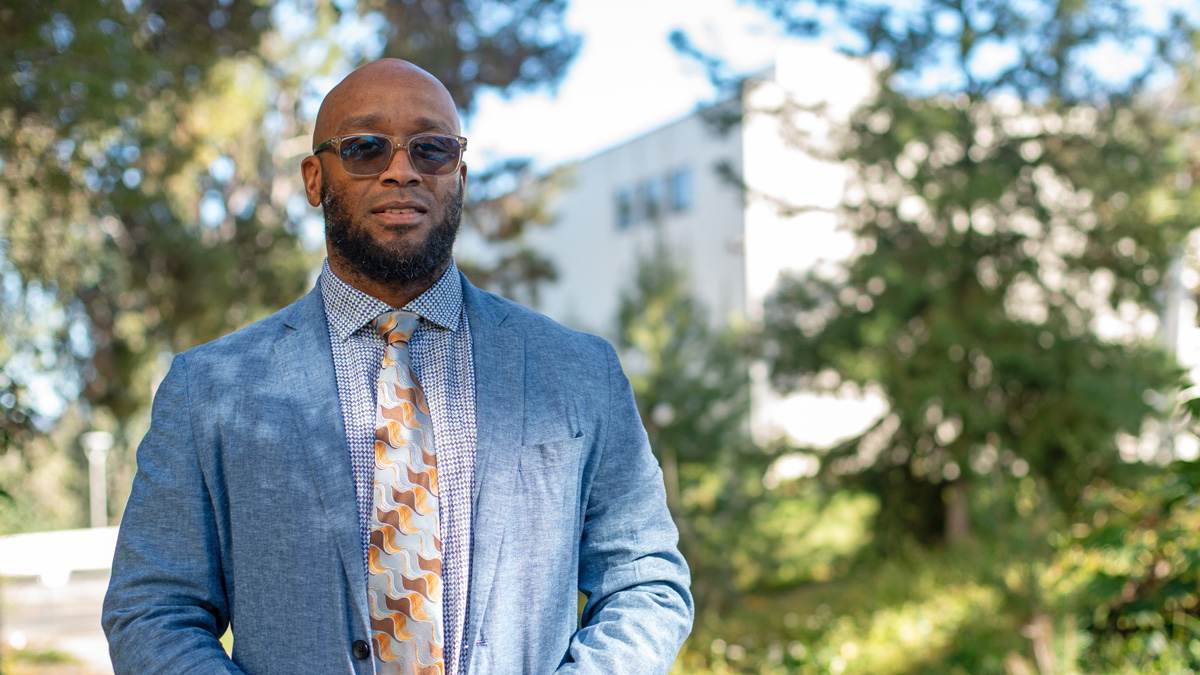COE DIFFERENCE MAKERS: EDL's Wright Motivated By Untapped Potential

Waterbury, Connecticut is known as The Brass City, an homage to its proud past as a hub for brassware manufacturing. In the early and mid 20th century, the industry's abundant blue-collar jobs were a magnet for migration, both from abroad and in the Jim Crow South. James Wright's large family — his mother had 15 siblings, and he counts more than 50 first cousins — was part of the latter, adding to a Black community that now makes up more than a fifth of Waterbury's population.
But by the 1970s, The Brass City was starting to tarnish. The forces of deindustrialization caused factories to shutter and livelihoods to vanish.
“My cousins and I were the first generations of my family not born in the South,” Wright said. “So as we're coming of age while deindustrialization is happening, we don't understand why we're in (Waterbury). We experienced everything that comes from divested communities with many diverse people of color —crime, drugs, everything. And I attended a public school system that reflected these realities.”
Now an assistant professor in San Diego State University's Department of Educational Leadership, Wright's memory of Waterbury — of family and friends he saw failed by failing schools — drives his teaching, research, and scholarship.
Learn more about his work in his own words.
On the lessons of Waterbury
“I think about the generations of untapped potential that we lost because of the role of educational policy, leadership practices, and educational norms. A lot of what I do is speak back against these practices and speak for what I know is possible. I know the potential that exists in my community. Now I'm in a position as a professor at SDSU where I have a chance to interact with different educators across San Diego — primarily principals and people trying to become principals — to share this perspective and my research, which speaks to my lived experience.”
On his research
“My research is primarily grounded in culturally-responsive school leadership. Much of that entails historicizing the value of cultural and epistemological connections and relationships with students through curricula and their lived experiences. As a model, we can see the value in having a body of educators and curricula that reflects and understands the children from certain communities. That connection is necessary. Such disconnections make the schooling experience more difficult, and you get unrealistic expectations placed on children. For the past seven decades, post-Brown v. Board of Education, the model we've been under has failed generations of otherwise highly intelligent students.”
On mistakes made post-Brown
“In the United States, we had a 100-year institution of segregated schools (1865-1964, more or less) which, on the surface, sounds terrible. But when you look at its value for Black students, given the racial climate at the time (the 1950s-1960s), you had educators who understood the children and children who understood the educators. They shared the same culture and neighborhoods. Educators saw themselves in these kids; they saw potential and possibility. When Brown v. Board dismantled segregated schools, what should have happened is that there should have been integration going both ways — white children going to schools with Black educators and vice versa. But that's not what happened. And as a result, this 100-year-old institution that valued Black students evaporated almost overnight. At the same time, white students didn't have the opportunity to learn from Black educators and see Black people as authority figures in schools. That is fundamentally the cultural disconnect we see now in education and society.”
On his motivation to fight for change
“There were people before me, ancestors of mine, who fought this fight and did it graciously and valiantly. The results of what they did paved the way for me to even sit in this chair right now. I also have sons who are going through the same kinds of matrices I went through, trying to navigate K-12 schools. It's frustrating to see them go through the same things — lowered expectations, deficit framing, and having teachers not see or value their intelligence. I'm also motivated by my students. Those who buy into my research and teaching and show gratitude and excitement for the work I'm a part of. I tend to pour a lot into them, especially because, as school administrators, they can activate change almost immediately.”
